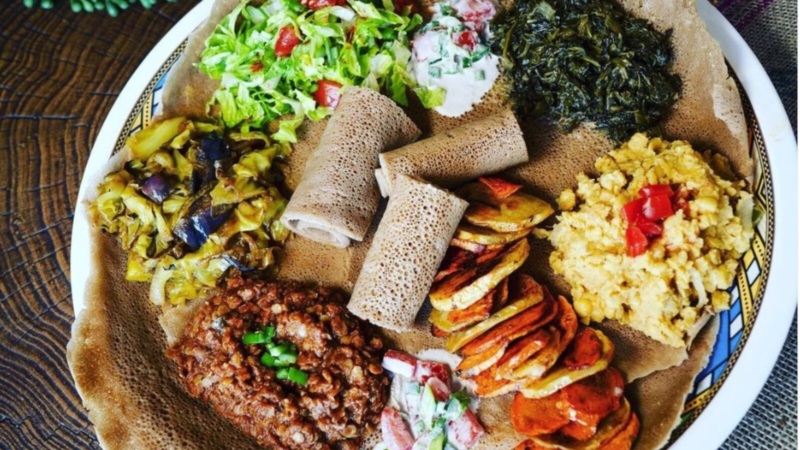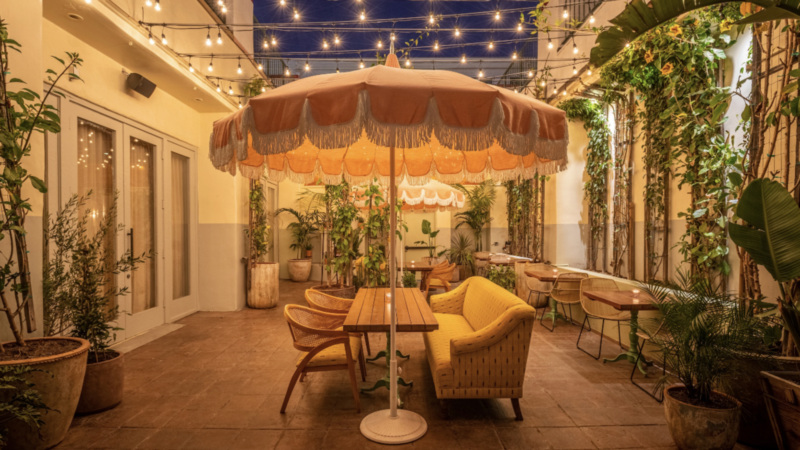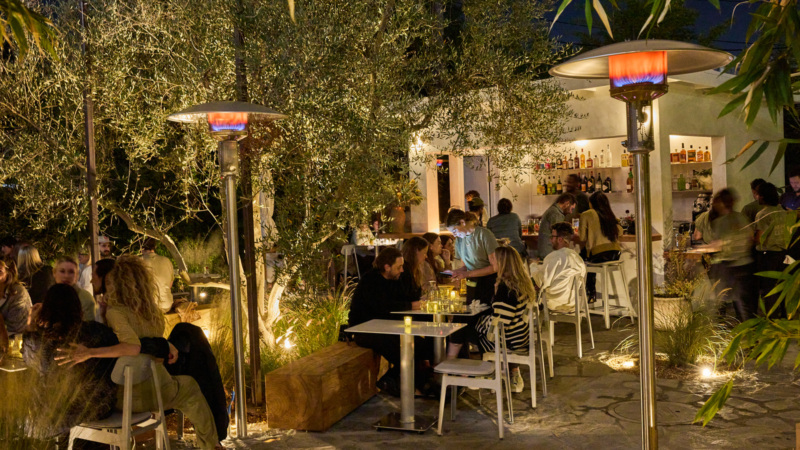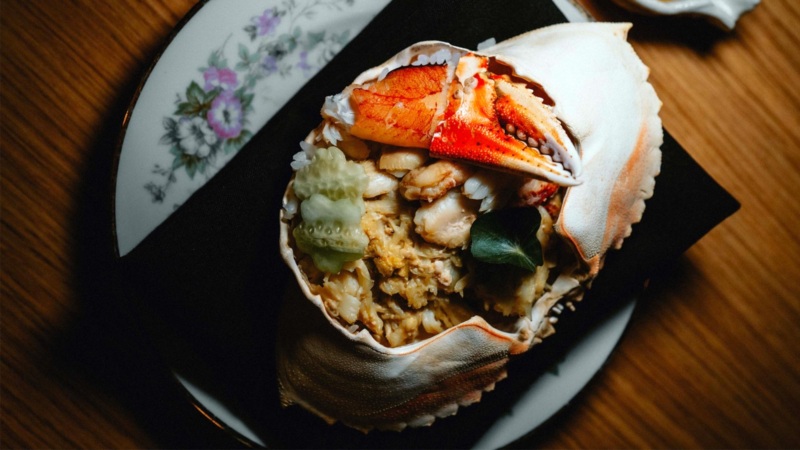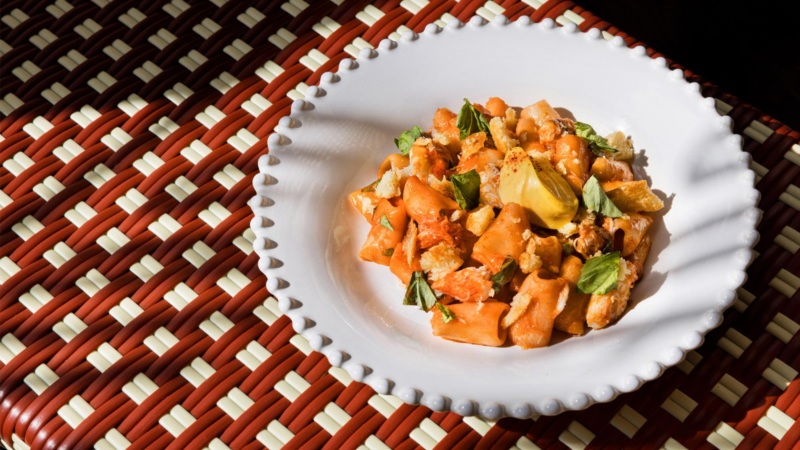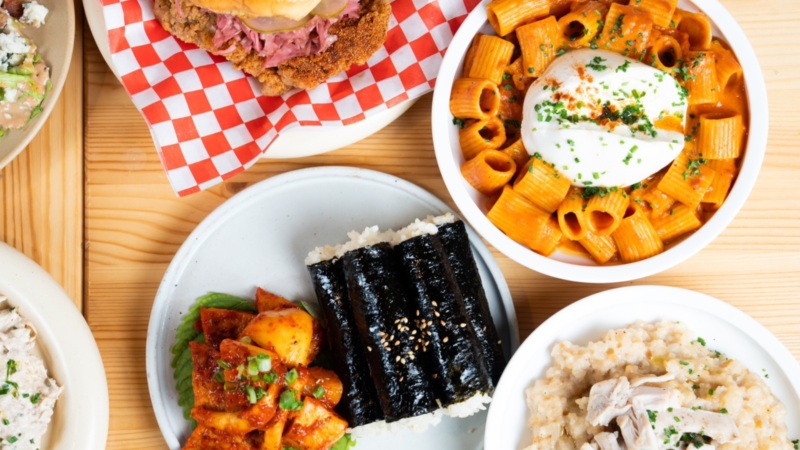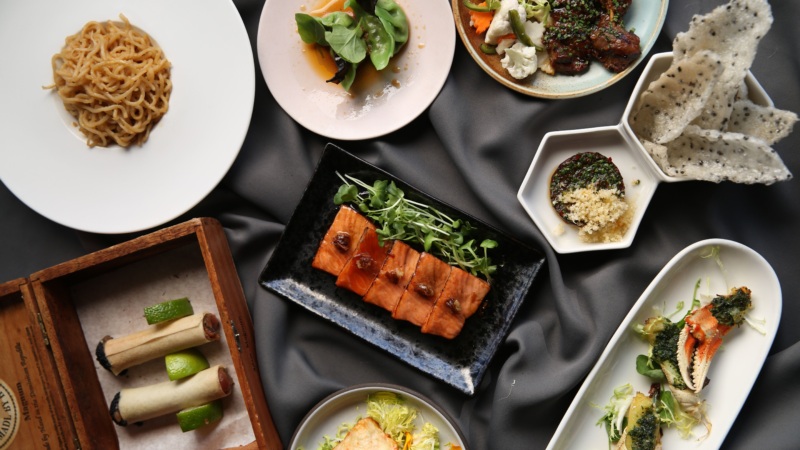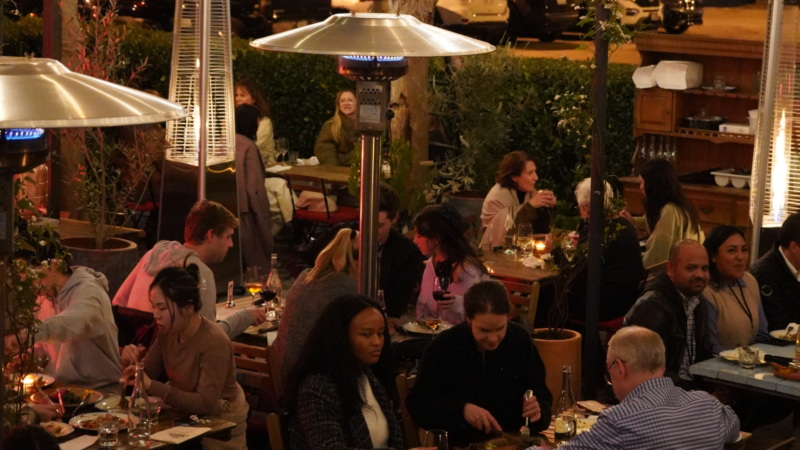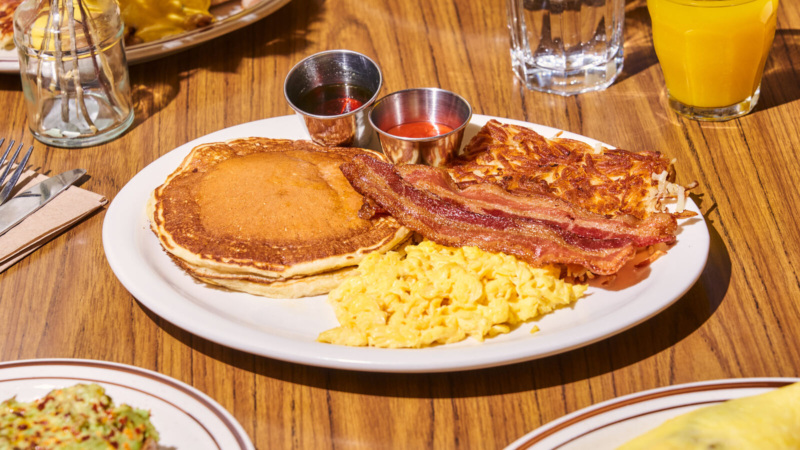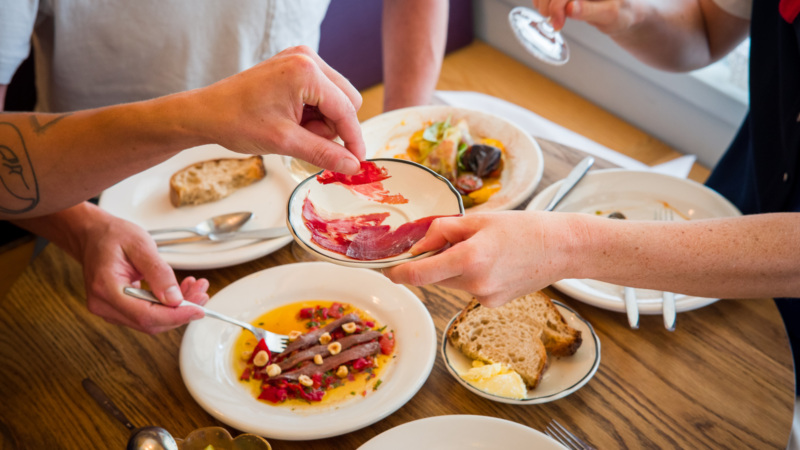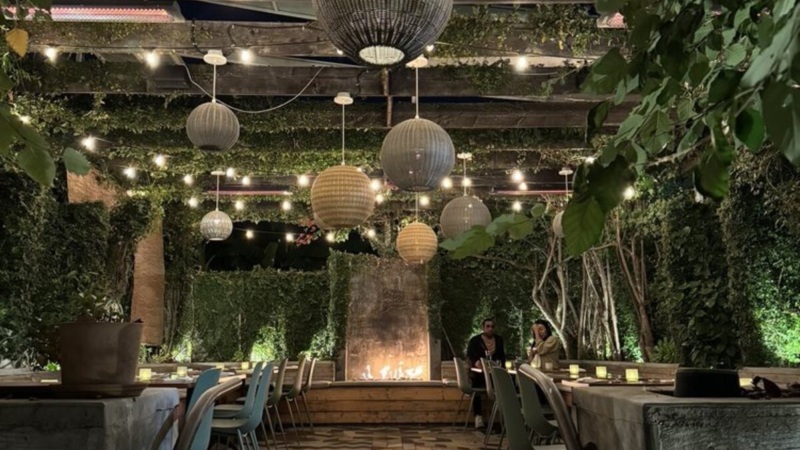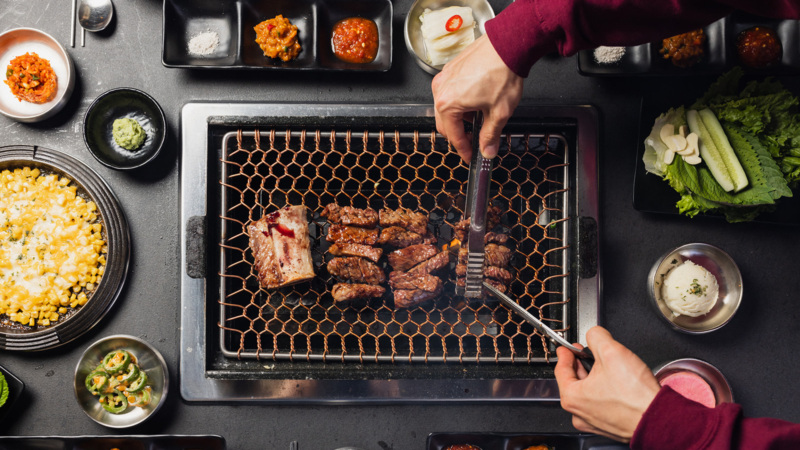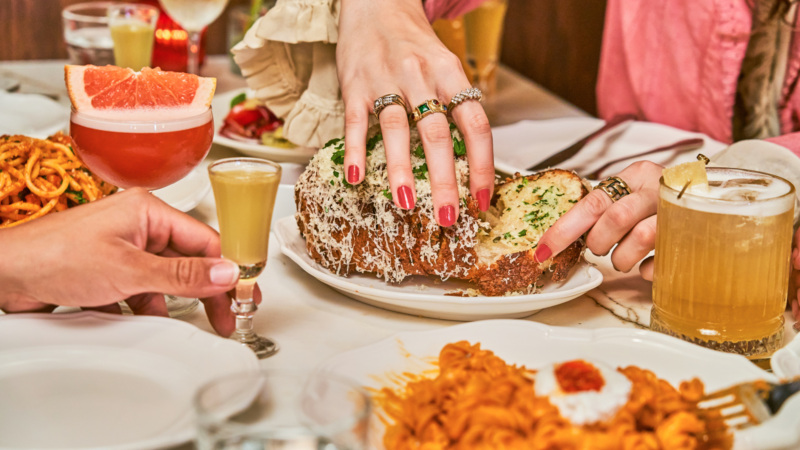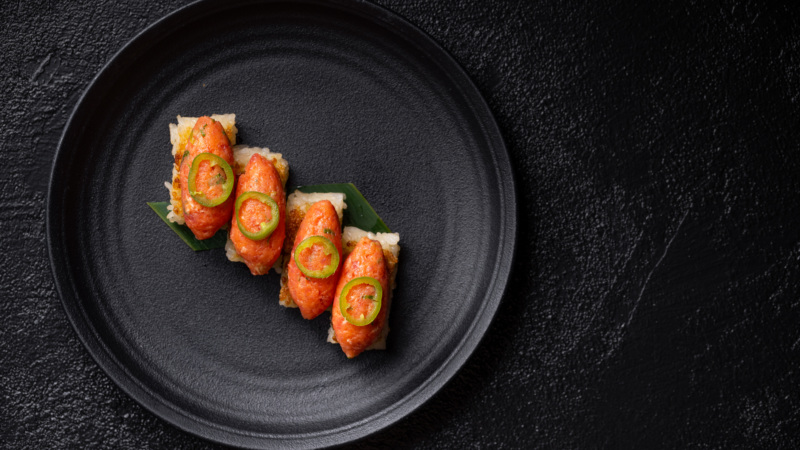
The New Baroo Is Worth the Wait
For a restaurant that began as a 16-seater in an East Hollywood strip mall with no signage, reappeared down the street as a pop-up in a now-razed flea market, then ceased to exist for several years, Baroo has made an indelible imprint on Los Angeles.
Local and national acclaim was immediate, but it was near impossible to fathom how Kwang Uh and his business partner during Baroo No. 1, Matthew Kim, layered unique ingredients to create such gustatory depth without visiting yourself. There was nowhere else in America like it, and though you knew Baroo as a place that experimented with fermentation in their Korean-inflected menu, their meticulous-yet-humble bowls evoked flavors and textures that were simultaneously familiar and revolutionary.
There was nowhere else in America like it … [T]heir meticulous-yet-humble bowls evoked flavors and textures that were simultaneously familiar and revolutionary.
In addition, Mina Park — whom Uh met while on sabbatical at the Buddhist temple that’s home to Jeong Kwan Seunim of Chef’s Table fame — helped run Baroo Canteen during its 10-month flea market stint. During their hiatus while planning for the new, permanent Baroo, Uh and Park have kept busy, setting up a stand in Downtown L.A.’s Grand Central Market, named Shiku, which means “family” in Korean. With its reliable rice bowls with Korean-style meats and banchan, Shiku has become a fan favorite in the historic food hall and has helped to sharpen the couple’s business acumen.
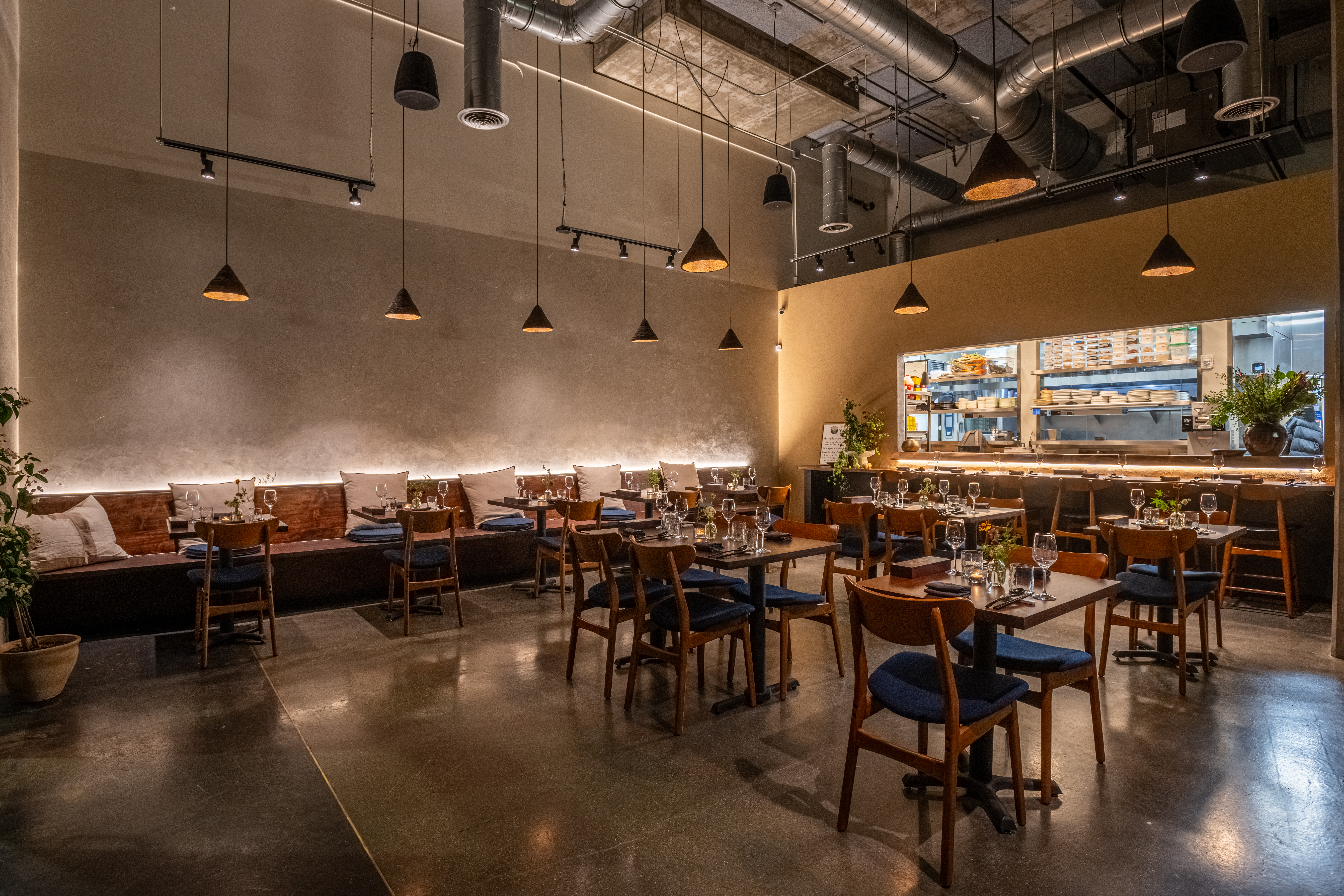
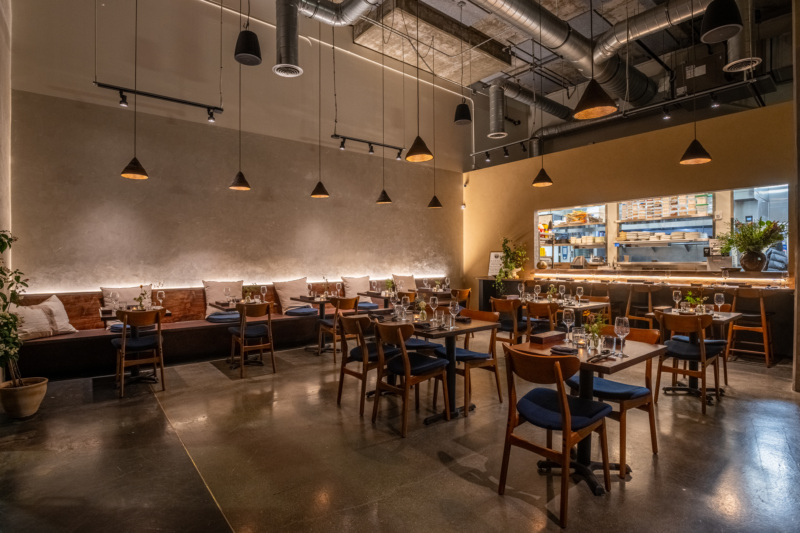
And it re-enters the Los Angeles dining scene at a pivotal moment: after the city has established itself as an authority in Korean dining thanks to its large diaspora and access to premium ingredients; but during an era in which a new generation is establishing its own point of view and evolving the cuisine to new, interpretive heights (see Yangban, Kinn, et al). It’s not only exciting that Baroo now has the resources to realize their full potential; it’s the right timing, too.
While dishes at the new Baroo are very different, Park says, “the menu will contain little surprises and familiar notes for the people who have been supporting us all these years.” They’re open at half-capacity until they get their bearings, and the experience spans five courses for $110 per person, inclusive of service charge. A vegan option is available, as is wine, Korean alcohol, and non-alcoholic beverage pairings.
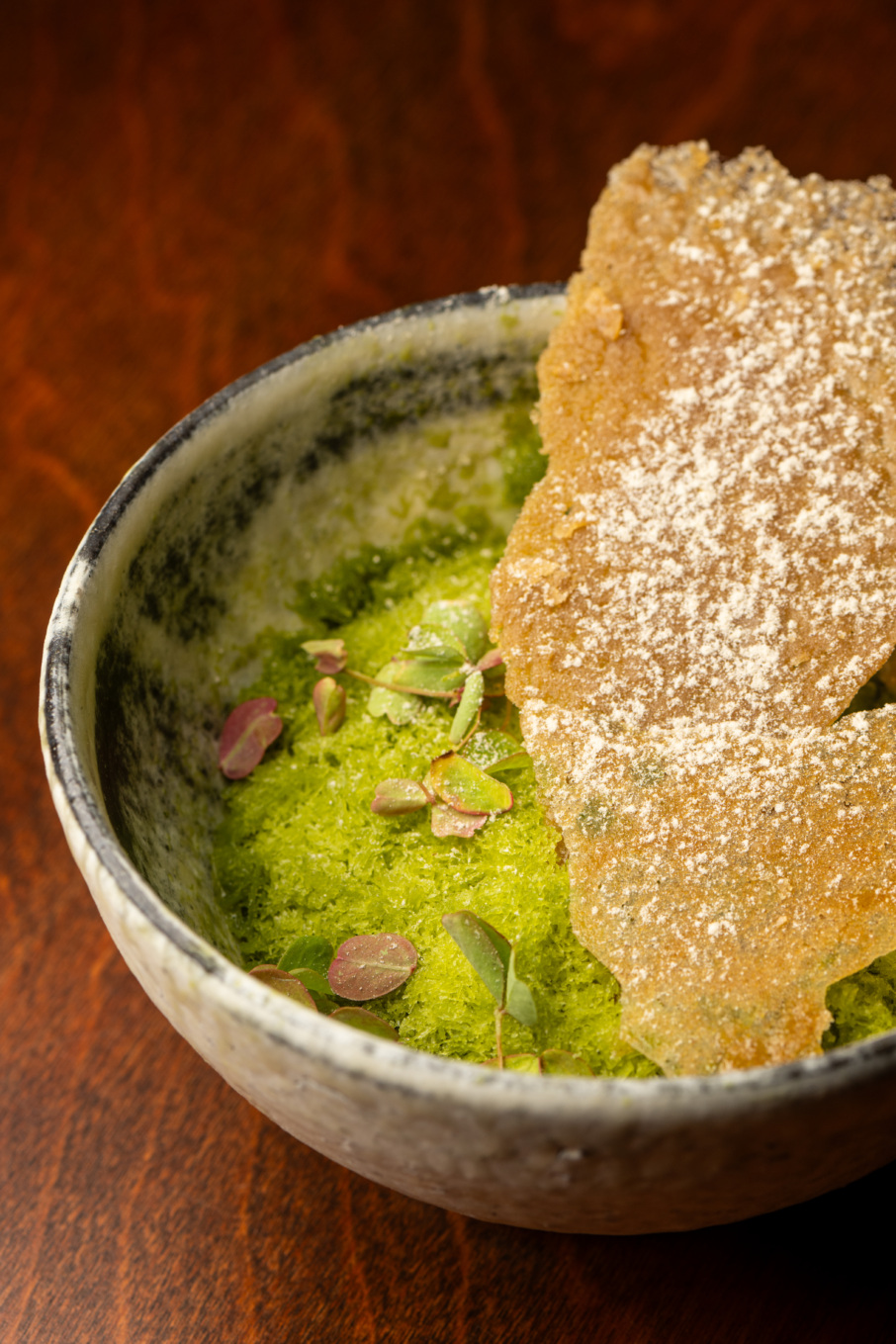
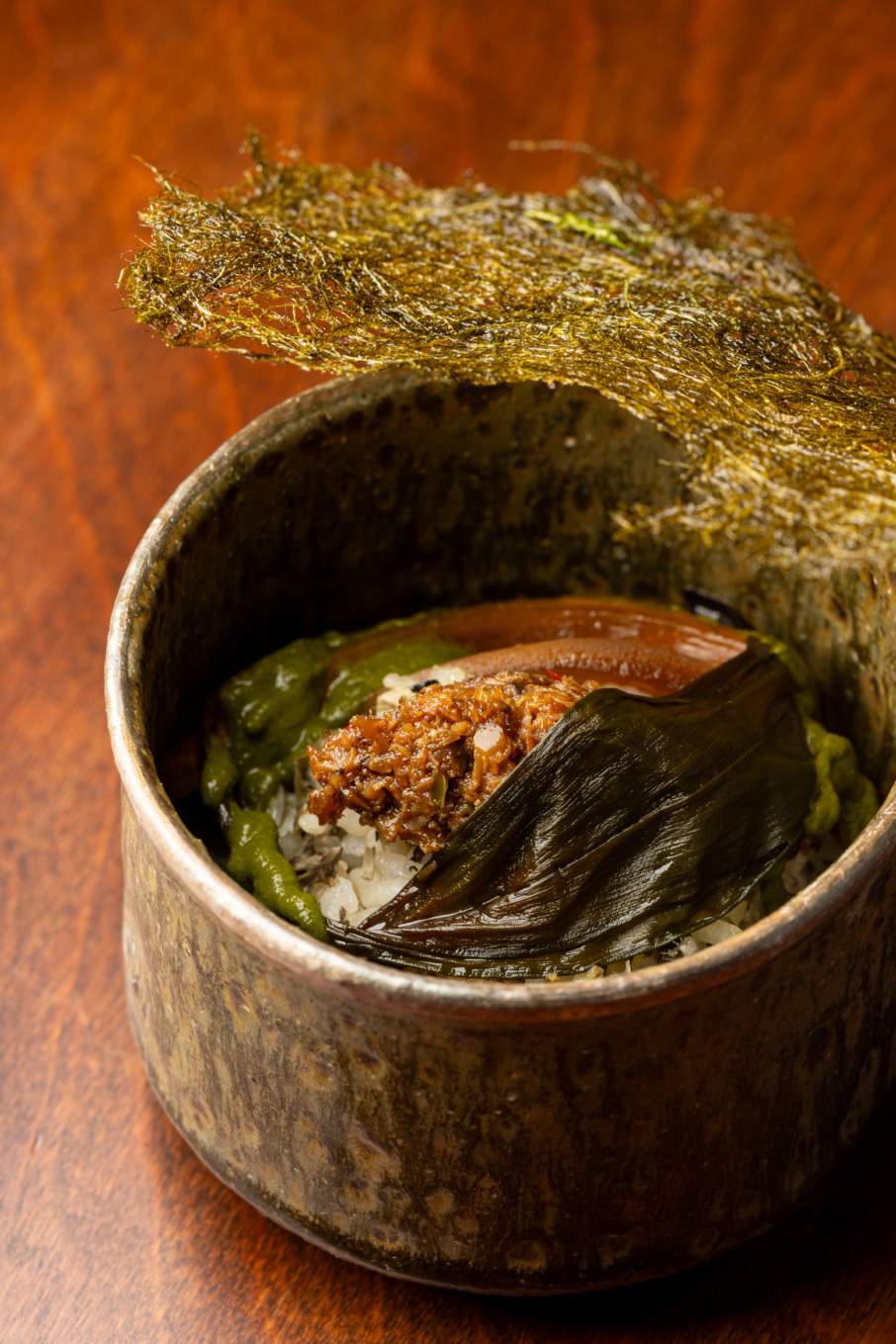
As for the menu, Uh and Park are excited to incorporate seasonality into their offerings in a way that the previous Baroos couldn’t. Think spot prawns and soft shell crabs, pork from Peads & Barnetts, and “obscure Korean vegetables” from Girl & Dug Farm. The real challenge, however, will be in how they’ll source these ingredients while keeping their creativity high and costs manageable. “We do want to be mindful of the fact that for a tasting menu, it’s relatively affordable. But for some people, it’s going to be the nicest dinner they have all year,” says Jason Lee, beverage director and front of house manager.
The common thread tying the old Baroo to the new, however, is the lighthearted spirit with which each dish is created. Carefully chosen ingredients will again be assembled to create courses that taste bigger than the sum of their parts. For example: fermented rice cake made with red yeast makgeolli, topped with gochujang ‘ndjua, smoked gouda cheese, finger lime crème fraîche, pichuberry, and herbs. And accompanying that will be corn gazpacho — combined with Granny Smith apple-celery-buttermilk cream and fermented corn tuigim (fried bits).
Uh has a distinctly playful style, evidenced in both the kitchen and in the way he chooses to name his dishes. He references a combination of “Konglish,” Eastern philosophy, and positive outlook as the root. For instance, “Ragu Style” — a pasta dish with puffed tendon and a spicy sauce — was named by appending “style” to convey that this particular sauce isn’t literally ragu. “Noorook,” a mixed grain bowl with concentrated kombu dashi, named after the Korean word for koji, was to the letter. But the halved fried mushroom balls overlaid with tiny endives called “XO to All” was a karmic visual. “I found out the meaning was hugs and kisses, and when I plated it resembled ‘X.’ Plus, calling it ‘arancini’ was kind of old,” says Uh.
As for a herbaceous, shrimpy rice bowl named “Asian Fever?” “I thought, ‘This has a lot of Asian flavors, so maybe it’s going to taste good to Asian people,’” explains Uh. It was only later that he learned it can also refer to a preference for a kind of interracial dating.
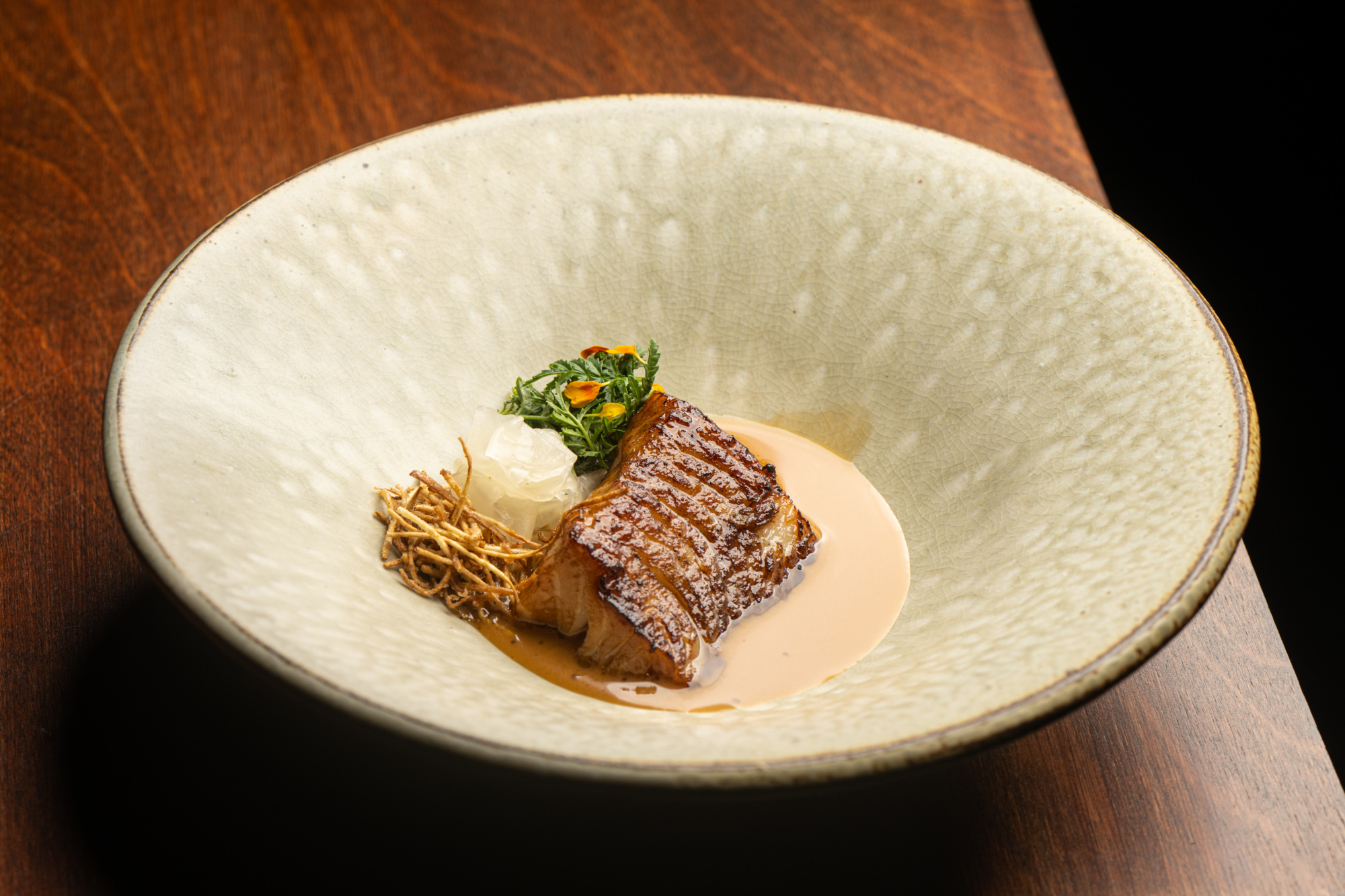

All this goes to say that Uh and Park want everyone to have as much fun eating these dishes as they’ve had creating them. “[The names] are a peek into the way his mind works, but also his approach to the food: Not taking it too seriously and just having some fun with it. And hoping people who come will have a little smile,” says Park.
Neutral tones are the conduit for the Zen aesthetic of Baroo’s interior, providing a grounding canvas for the food. Longtime customers behind L.A.-based OWIU Design Studio helped Uh and Park make the most of their new space from what was left by the previous tenant. This allowed them to keep down costs with an eye on sustainability. “We had a very limited budget and they really helped us repurpose what was already here and make it our own,” says Park. The most dramatic fixtures in the space are the lamps made out of seaweed, which resemble papier maché in texture.
Who knew that eight years ago, this tiny
restaurant — staffed by two people who expected it to last no longer than one year — would come this far?
The most striking addition to Baroo, however, is the new beverage program by Jason Lee. Previous experience at a wide range of restaurants such as Kali, n/soto, and Pijja Palace have set Lee up to finally “have the opportunity to lean into and learn about where my people come from,” he says. Working with a beer and wine license, Lee is pushing craft Korean beverages, the backbone of the program, in a whole new way. “Anything that’s not coming from the farmer’s market is going to be a Korean ingredient,” Lee says. Korean teas will be available too, not only for service but incorporated in the cocktails. Look for a soju cocktail with chamoe cordial, dry vermouth, and Yakult foam, as well as a banana milk punch utilizing binggrae.
And there are not only several innovative and balanced low-ABV drinks, but entirely new categories that haven’t been widely available in other Korean restaurants — yet. With soju’s standing as the most widely known Korean alcohol in the States, Lee plans to not only make yakju and makgeolli a bigger part of our drinking repertoire, but introduce craft sojus that will put that ubiquitous green bottle to rest. Some examples include Seoul Night, which is redistilled with maesil (green plums) for that distinctive flavor, and Hwanggeum Bori, a barley soju with earthy notes.
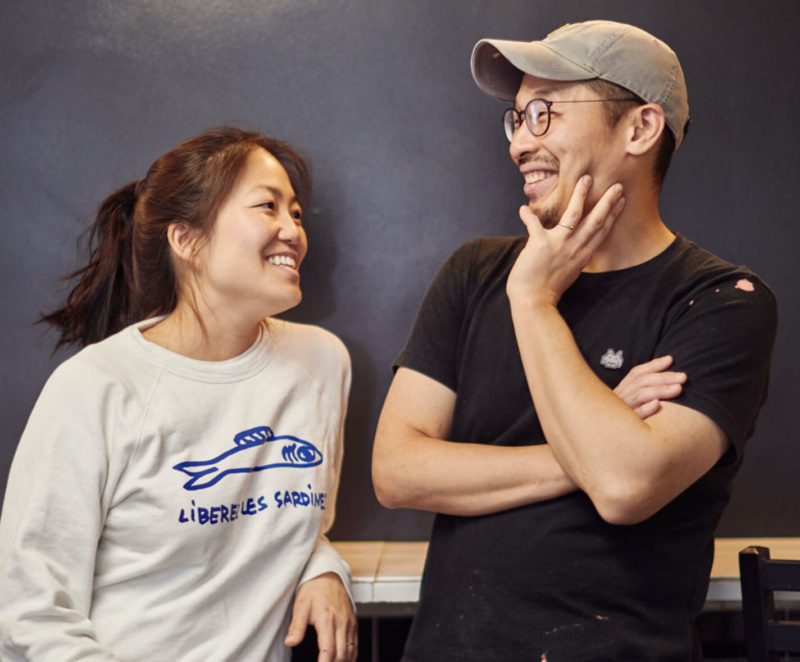

In the future, Lee envisions a bar with its own vibe and separate food menu, and that space becoming a place where revelers can gather on their way elsewhere in the Arts District. “We do want it to feel lively and have a little bit of a wine bar vibe. I think it would be exciting if people wanted to come try a drink before getting dinner at Camphor or going to Death & Co,” he says.
It seems, then, that Baroo has arrived at their permanent locale at just the right time, squarely parked in a neighborhood on the forefront of dining innovation. Who knew that eight years ago, this tiny restaurant — staffed by two people who expected it to last no longer than one year — would come this far?
Through its many iterations and locations, Baroo has always meant thoughtful food, with sometimes advanced techniques that nevertheless result in deeply comforting fare. Now, they finally have a space that matches their ambitions, and L.A. is more than ready to welcome the team home.
Esther Tseng is a food, drinks and culture writer. She has contributed to The Los Angeles Times, Eater, Food & Wine, Civil Eats and more. Follow her on Twitter and Instagram. Follow Resy, too.










